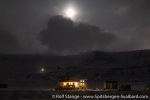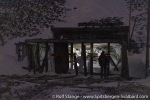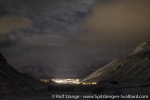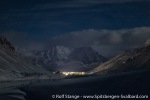-
current
recommendations- Liefdefjord
New page dedicated to one of Spitsbergen's most beautiful fjords. Background information and many photos.
- New Spitsbergen guidebook
The new edition of my Spitsbergen guidebook is out and available now!
- Liefdefjord
New page dedicated to one of Spitsbergen's most beautiful fjords. Background information and many photos.
Page Structure
-
Spitsbergen-News
- Select Month
- May 2025
- April 2025
- March 2025
- February 2025
- January 2025
- December 2024
- November 2024
- October 2024
- September 2024
- August 2024
- July 2024
- June 2024
- May 2024
- April 2024
- March 2024
- February 2024
- January 2024
- December 2023
- November 2023
- October 2023
- September 2023
- August 2023
- July 2023
- June 2023
- May 2023
- April 2023
- March 2023
- February 2023
- January 2023
- December 2022
- November 2022
- October 2022
- September 2022
- August 2022
- July 2022
- June 2022
- May 2022
- April 2022
- March 2022
- February 2022
- January 2022
- December 2021
- November 2021
- October 2021
- September 2021
- August 2021
- July 2021
- June 2021
- May 2021
- April 2021
- March 2021
- February 2021
- January 2021
- December 2020
- November 2020
- October 2020
- September 2020
- August 2020
- July 2020
- June 2020
- May 2020
- April 2020
- March 2020
- February 2020
- January 2020
- December 2019
- November 2019
- October 2019
- September 2019
- August 2019
- July 2019
- June 2019
- May 2019
- April 2019
- March 2019
- February 2019
- January 2019
- December 2018
- November 2018
- October 2018
- September 2018
- August 2018
- July 2018
- June 2018
- May 2018
- April 2018
- March 2018
- February 2018
- January 2018
- December 2017
- November 2017
- October 2017
- September 2017
- August 2017
- July 2017
- June 2017
- May 2017
- April 2017
- March 2017
- February 2017
- January 2017
- December 2016
- November 2016
- October 2016
- September 2016
- August 2016
- July 2016
- June 2016
- May 2016
- April 2016
- March 2016
- February 2016
- January 2016
- December 2015
- November 2015
- October 2015
- September 2015
- August 2015
- July 2015
- June 2015
- May 2015
- April 2015
- March 2015
- February 2015
- January 2015
- December 2014
- November 2014
- October 2014
- September 2014
- August 2014
- July 2014
- June 2014
- May 2014
- April 2014
- March 2014
- February 2014
- January 2014
- December 2013
- November 2013
- October 2013
- September 2013
- August 2013
- July 2013
- June 2013
- May 2013
- April 2013
- March 2013
- February 2013
- January 2013
- December 2012
- November 2012
- October 2012
- September 2012
- August 2012
- July 2012
- June 2012
- May 2012
- April 2012
- March 2012
- February 2012
- January 2012
- December 2011
- November 2011
- October 2011
- September 2011
- August 2011
- May 2011
- April 2011
- March 2011
- February 2011
- January 2011
- December 2010
- November 2010
- September 2010
- August 2010
- July 2010
- June 2010
- May 2010
- April 2010
- March 2010
- February 2010
- November 2009
- October 2009
- August 2009
- July 2009
- June 2009
- May 2009
- April 2009
- March 2009
- February 2009
- January 2009
- December 2008
- November 2008
- October 2008
- August 2008
- July 2008
- June 2008
- May 2008
- April 2008
- March 2008
- February 2008
- April 2000
- Select Month
-
weather information
-
Newsletter

| Guidebook: Spitsbergen-Svalbard |
Home → January, 2023
Monthly Archives: January 2023 − News & Stories
Further exceptions for driving licenses
The driving license question was one of last year’s major issues in Longyearbyen: in November, it was suddenly found out that driving licenses from a number of countries are not valid in Spitsbergen. The reason involves a lot of juridical small print: driving licenses need to meet the requirements of the Vienna Convention on Road Traffic to be valid in Spitsbergen. This convention was ratified by 85 countries – this leaves many which are not part of that club, such as the United States, Canada and Indonesia, to mention just a few.
There are many citizens of these countries living in Longyearbyen, and many of them need to drive as part of their work or everyday life. The thought of not having a valid driving license has shocked many of them. It is said that there are cases where people have already lost their jobs and home. In Longyearbyen, many employees get their accommodation supplied by their employer. If you lose your job, then you lose your accommodation at the same time.
In December, the Sysselmester announced exceptions for certain types of driving licenses after negotiations with relevant Norwegian authorities. This was a relief for many, but not for all who are concerned.

The amount of road traffic in Longyearbyen is remarkable, and so are some of the cars that you can see there.
Norwegian authorities now went a step further, as the Sysselmester announced today: now there are exceptions for driving licenses from countries that have ratified that Geneva Convention of 1949 on road traffic. This includes a number of countries that are not part of the Vienna convention, such as the USA and Canada. This may be helpful for citizens of these countries who live in Longyearbyen, but also for tourists who want to rent a car or drive snow mobile.
The exception is valid through 2023. During this year, Norwegian authorities want to work with the issue to find a proper long-term solution.
New rules in the making
New and stricter regulations have been in the legislative process now for years. These rules will not only, but mainly concern tourism. A propsal for a new set of rules was made public and went through a public hearing in early 2022. The number of submissions in the public hearing – 92 – was unusually high, and also beyond that, there was and is an ongoing, rather controversial public discussion about the new regulations.
Now the process had taken a major step. The responsible technical authority, Miljødirektoratet (the Norwegian national environmental agency) has gone through the proposal in the light of the input from the public hearing. This took more than half a year. The result? Practically non-existent – the Miljødirektorat has passed the proposal on, back to the government, almost without changes, as for example NRK wrote.
The most important changes include:
- Landings in the major protected areas will be restricted to 43 selected sites. The large remaining part of these huge areas will then in practice be closed for the public. Areas outside the national parks and nature reserves are not concerned. Also the national parks in Isfjord shall remain accessible in the same way as today.
- Also on the west coast, passenger (cruise) ships are limited to a maximum of 200 passengers on board, as already in the nature reserves which comprise the whole eastern part of Svalbard. This would, in practice, mean that large, international cruise ships can not visit Spitsbergen anymore. Until now, Spitsbergen has been a regular destination for some of these ships, although restricted to Isfjord (mainly Longyearbyen) in practice due to legislation that is already in force, mainly the ban on heavy oils in the national parks.
- A general minimum distance of 500 metres to polar bears. Minimum distances are also proposed for walruses: 300 m for boats from resting places (original “liggeplasser”) and 150 on land.
- Further regulations include, amongst others, a ban on breaking fjord ice (this is already forbidden), a ban on motorised traffic (snow mobiles) on fjord ice (also nothing really new) and a ban on drones in protected areas (so far already regulated, but not generally forbidden).

Hiking in a remote part of Nordaustland:
not possible anymore when the new rules are in force.
This means that the original proposal will now be passed on to the government for further legislative processing almost without chances. Especially the idea to limit the quantity of tourism, especially the number of ships, rather than their range, was in practice ignored. A representative of the Miljødirektorat told Svalbardposten actually that there are “several possibilities to solve this”, referring to “concessions”, which would effectively reduce the number of ships. But this is still not part of the proposal, as the evaluation of such possibilities “was not part of the mandate”, according to the representative interviewed by Svalbardposten.
Now the whole package will go back to the government for further consultations until it is turned into a law that can be passed by the parliament and then turned into valid law by the signature of the Norwegian king. This may still take some time, and there may still be changes. But the probability that the final law will look very similar to the original proposal has now strongly increased.
The original schedule included 01 January 2023 as the day when the new laws should enter force, something that has obviously not happened yet. There are those insiders in Longyearbyen who are certain that the new rules will not effectively come before 2024, but there is no really reliable information publically available.
Comment
Good to hear: there would have been other – better! – ways of dealing with the key problems. Too bad they were just not part of the job of Miljødirektoratet as ordered by the environmental ministry. Nice to hear that they knew this. It would have been even nicer if they had done anything with it. This opportunity passed unused, at least as far as Miljødirektoratet is concerned, a player on the lower levels of the legislative process, but a key player. It would probably have been naive to expect something different, considering how other legislative processes went in recent years, the most prominent one probably being the voting rights issue. The Miljødirektorat didn’t have anything to do with that one, but it indicates a remarkable consistency of Norwegian law-giving in recent years in this regard.
Most people will agree that the grown and still growing number of cruise ships is a matter of concern. There were about 80 passenger ships in Svalbard in 2022, and that number is expected to grow unless something happens. A focus of the growth is on ships with a capacity between 100 and 200 passengers: small enough to sail below the intended limit of 200 passengers (intended on the west coast, already in force in the east, to be precise), but large enough to leave more of a local footprint, for example in shape of erosion, than the really small ships, most of which carry 12-30 passengers.
One may ask: if the number of ships is the main problem, why not do anything with the number of ships? A permit system could effectively limit – and reduce – the number of ships to a sustainable level. But this is not the plan. Not part of the job, sorry. Too bad.
On top of these concerns comes the impact of climate change on arctic nature, as no serious voice can deny. It is great to hear that politicians in Oslo are concerned by climate change. Even better if they want to do something about it. Please, go ahead – today, not tomorrow! It is not my intention to pretend that Norway is not doing anything about climate change. But as a country that has been making fabulous money with oil and gas for decades, Norway’s credibility within the fight against climate change is limited, to put it mildly. Yes, Norwegian production of oil and gas reacts to demand in other European countries, who have not done their homework with regards to making their energy markets greener and rather bought cheap Russian oil and gas which needs to be replaced now on short notice. That is all well understood. Still, Norway’s credibility is limited and introducing measures that won’t make a difference for the fight against climate change, but will hit an industry hard – obviously an industry not considered relevant on a national level in Norway, and partly even an international industry – will not make any positive contribution. The price is paid by others, but who cares as long as it looks good in some way, almost if they’d actually really do something. In this last sentence, emphasise almost, not really.
New Year’s Eve and polar night
This website’s start into the new year was as grim as one could only imagine. Now this second posting is also dedicated to dark affairs, but in a completely different sense that includes the very special aesthetics of the polar night. Here are some impressions from the darkest time of the year in the high north, where New Year’s Eve celebrations follow a pattern quite similar to what most readers will know from wherever – in the end, almost everywhere in the world the old year is seen off and the new one welcomed with some fireworks. In Longyearbyen, there is a public one and very little private banging and shooting. Actually, there are two, a family-friendly one at 19.00 hours and then of course one at midnight.
- gallery anchor link: #gallery_2600
Click on thumbnail to open an enlarged version of the specific photo.
Arjen Drost, 1976-2023
Many knew Arjen Drost from countless trips in the Arctic and Antarctic over many years. Just a few weeks ago, he was in Antarctica, enjoying the wildlife and everything else he loved so much.
On Wednesday (January 04, 2023), he finally lost a fight that he had been fighting for years.

Arjen Drost, as he lived and loved his life, in the Ross Sea (2017).
Highly respected as a colleague.
Highly esteemed as a friend.
Much loved by many as the human being that he was.
Now Arjen is dancing with the northern lights.

Arjen Drost, the “larger than life man”, in the Antarctic Peninsula.
Good times long gone by (Vernadsky Base, 2005).
News-Listing live generated at 2025/May/09 at 13:57:25 Uhr (GMT+1)











































